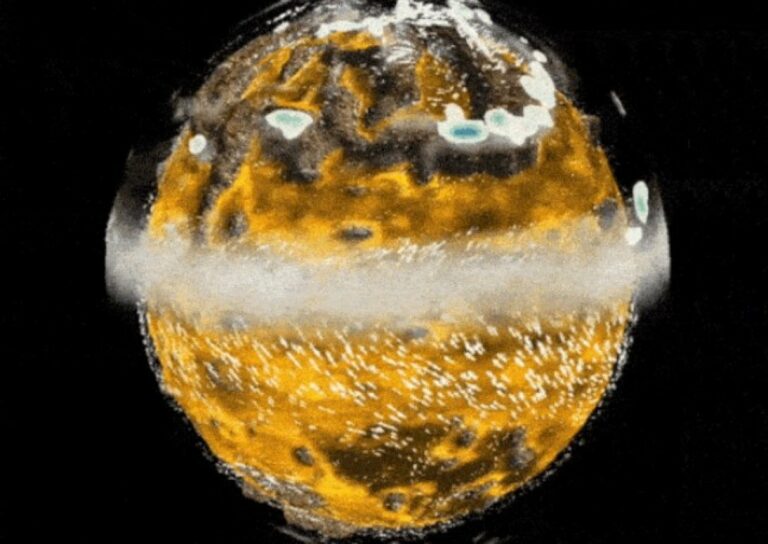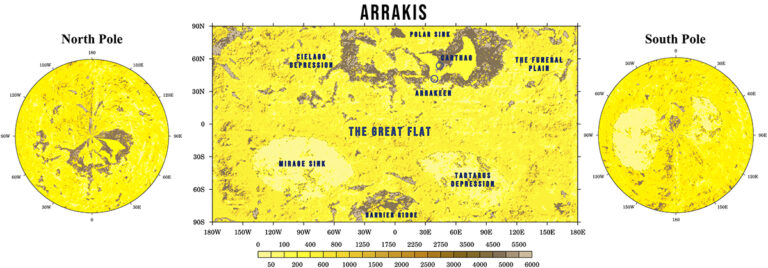Scientists from Bristol and Sheffield Universities have created a visualization of the climate of the fictional planet Arrakis, which is the setting of the famous novel “Dune” by Frank Herbert. The purpose of the study was to check how the conditions described in the book on the surface would correspond to modern climate models.

As a basis, scientists have taken a climate model, usually used for predicting Earth’s weather. Then it was supplemented with data on the topography and composition of the atmosphere of Arrakis contained in the novels of the series, as well as in the “Encyclopedia of Dune”.
According to books and films, Arrakis is a world of the merciless light of the star Canopus, endless sands, rocky wastelands and powerful storms. However, the closer to the polar regions, the more “portable” the climate becomes. Therefore, most of the cities of Arrakis are located there, and there are even small ice caps at the poles of the Dune.

However, the climate model created by scientists showed otherwise. In fact, under such conditions, tropical latitudes will be the most hospitable for people. At the peak of the heat, the temperature in them will rise to 45 °C, while in the coldest months it will not fall below 15 °C. A person may well live in such conditions.
The most extreme temperature changes will occur in temperate latitudes and circumpolar regions. In summer, the sand in them should warm up to 70 °C (which corresponds to the book), while in winter the temperature will drop to -40 °C in temperate latitudes and -75 °C at the poles. Such indicators are deadly for people, so in reality these regions would most likely remain uninhabited, and cities would be concentrated in the tropics.
Such a conclusion seems counterintuitive, because the equatorial regions receive more energy from the star. However, modeling of the circumpolar regions of Arrakis shows that it is much wetter here, and the clouds are thicker, and all this warms up the climate, since water vapor is a greenhouse gas. In winter, the polar night factor comes into play.
The model also showed that light rains are still possible in such conditions. But they will be limited to mountains in high latitudes. As for the polar caps, their existence is impossible here. Any ice will melt in summer, and in winter there is no snow on Arrakis, allowing the caps to form anew.
In general, although the model showed a number of discrepancies with the book, Arrakis could indeed be an inhabited, albeit very inhospitable world. It should be added to this that the original “Dune” was written back in 1965, when the first climate model was still a few years away. Given this, the world that Frank Herbert described looks extremely plausible even almost sixty years after its creation.
Follow us on Twitter to get the most interesting space news in time
https://twitter.com/ust_magazine

